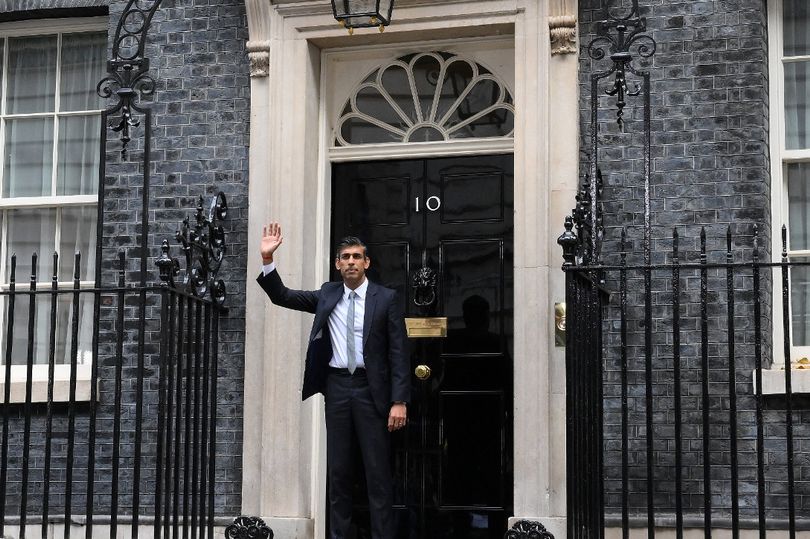
INSIDE NO 10 DOWNING STREET - SECRET BUNKER, EERIE TUNNELS AND CONTROVERSIAL GARDEN
It's one of the most famous addresses in the world, but it's somewhere many people will have never seen the inside of.
It's behind the door of Number 10 Downing Street that some of the biggest state secrets are discussed, and some of the most earth-shattering decisions are made.
And in keeping with the drama, there's nothing boring about No. 10. Beneath the PM’s home lies a network of mysterious bunkers. Intrepid urban explorer Dan, from Exploring With Fighters, ventured into the forbidding subterranean world to get a glimpse at the tunnels few top politicians have even seen.
The risky operation involved Dan’s guide for this trip, Matthew Williams, scaling the side of a building before abseiling down the other side to access the door.
For all the latest election news follow The Mirror's live blog.
That allowed them access into the tunnels some 200 feet beneath the London streets. Heavy steel doors guard the entrance to the maze of tunnels, and underground trains rumble overhead as the team of explorers walked down steel-reinforced tunnels dotted with occasional “stalactites” of limescale.
There are even rubber seals on the doors, to prevent microscopic particles of radioactive fallout seeping through in the event of a nuclear attack.
However, the tell-tale signs of water seeping in here and there suggest that the bunker was not quite as impregnable as its designers had hoped. “It would be great as an air-raid shelter,” Dan said, “but it would be terrible as a nuclear fallout shelter – you would be exposed to that radiation pretty quickly.”
An old landline telephone exchange was built for communication between different parts of the bunker, there’s a kitchen and even a bar but perhaps the most remarkable feature is a bowling alley, intended for survivors of World War Three to use.
When the tunnels were in use, No.10 staff would cycle along them to get from place to place. But, with the threat of a full-on nuclear exchange now fading, there are now plans to develop the Cold War bunker into an underground hotel and nightclub.
A now-disused exit leads out onto an underground station platform, but the explorers made their escape via a tiny two-person lift that leads out onto street level.
But while that bunker might not be fit for the protection of a PM, No.10 does come with one that's in full working order. After venturing below stairs in the building, it is accessed by another series of corridors and contains a world of briefing rooms, decontamination suites and communication and command and control offices.
It can be cut off from the outside world at a few minutes notice and has it's own ventilation system to allow people to breath without ingesting outside air.
The Pindar Bunker lies four stories deep, even deeper than the Tube lines which criss cross the capital, and is crammed with modern technology, including the ability to take over Britain's entire communications network.
Its construction - which took ten years and reportedly cost £126.3 million - was finished in the mid 1990s and was highly secret with plans being held back from public records.
More than 100 top politicians, generals and others could live in the bunker, built on the orders of Margaret Thatcher in the Eighties, in the event of nuclear war, a chemical weapons onslaught or other major attack.
There are bedrooms with simple bunks where the Prime Minister would sleep and cupboards stocked with mundane items like shower gel and toothpaste alongside glass cases holding breathing apparatus suits.
Meanwhile, back at ground level, No.10 contains everything you would expect - the famous Cabinet Room where they assemble for weekly meetings; 'The Study' which was used by Margaret Thatcher as her main office and, of court, the Grand Staircase as made famous by Hugh Grant's boogie to Girls Aloud in Love Actually.
Then there's the controversial garden that served as the backdrop to the Tories' scandalous 'Partygate'. During lockdown, more than 100 staff were invited to a boozy party on the lawn while the rest of the country was banned from meeting more than one person outdoors.
The rarely seen half-acre garden lies next to the Horse Guards Parade and features a large terrace as well and an L-shaped lawn.It is overlooked by the chancellor of the exchequer's flat and various PM's have tinkered with it - including Sarah Brown who installed a veggie patch, which produces radishes, spring onions, tomatoes and lettuce
Meanwhile, the Camerons installed a play area for their children and hosted a barbecue for the Obamas there. There is a central flowerbed with flower urns, a bench and an arch, while flower baskets line the terrace and roses line the main pathway through the garden. The garden also features an attractive bronze sculpture by Dame Barbara Hepworth and a pond. Ducks are often caught trying to nest there before being escorted back to St James Park.
Famously, David Cameron and Nick Clegg announced that a coalition government had been formed in the garden in May 2010. Meanwhile, in 2011, the Cameron's and Obama's jointly hosted a barbecue for military personnel. Blair held a press conference with Bill Clinton in the garden. Meanwhile, Dominic Cummings was forced to hold a press conference in the rose garden after members of the public spotted him in Barnard Castle.
Do you have a story to share? Email [email protected]
2024-07-05T11:23:57Z dg43tfdfdgfd